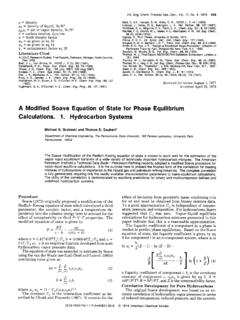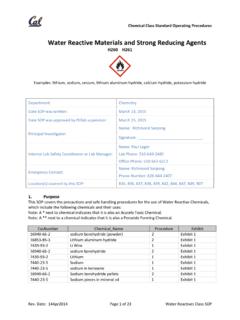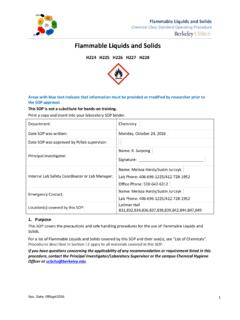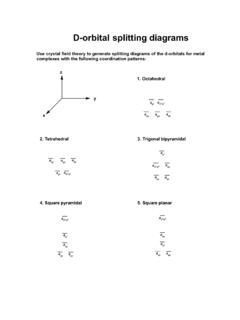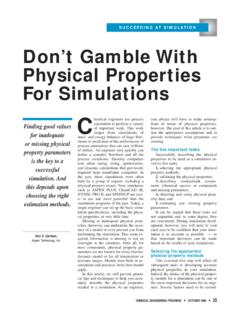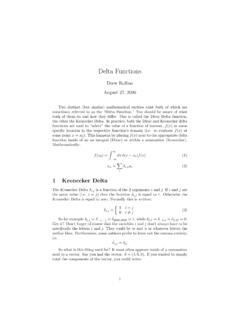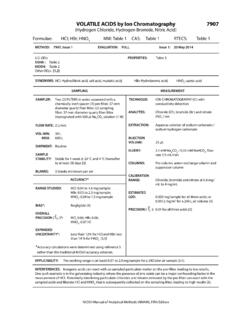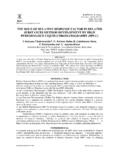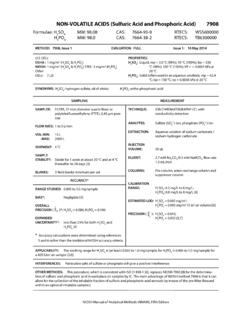Transcription of Dyeing Reagents for TLC
1 Dyeing Reagents for Thin-Layer and Paper Chromatography Contents Introduction Index of compounds and compound classes and appropriate detection Reagents Reagents in alphabetical order Introduction The first collection of instructions for the preparation of staining Reagents was published by Krebs, D. Heusser, and H. Wimmer in Egon Stahl s "Handbook of Thin-Layer Chromatography" in the sixties and lateron in a revised form repeatedly as a brochure by E. Merck Darmstadt, Germany until 1980 when the last unchanged edition was released. About 20 years later two comprehensive books on staining Reagents were published by H.
2 Jork, W. Funk, W. Fischer, and H. Wimmer "Thin-Layer Chromatography Reagents and Detection Methods, Vols. 1a and 1b" (VCH Weinheim, ISBN 3-527-27834-6 and ISBN 3-527-28205-X) - somehow as a replacement for the antiquated staining Reagents brochure. Both volumes are recommended to any thin-layer chromatographer because they show for each reagent at least one approved example and furthermore they offer plenty of information not only on instructions for preparation and handling but also on reaction mechanisms, coloration of derivates, limits of detection etc. etc. As still numerous chromatographers have been frequently asking for the cancelled Dyeing Reagents booklet its text was completely revised - mainly concerning ordering numbers, misprintings and other errors.
3 For easy accessibility the resulting new list below is now being presented in the internet. An alphabetical index of compounds and compound classes for which a detection reagent is being sought is given at the beginning followed by the staining Reagents listed in alphabetical order. Reagents for paper chromatography are additionally marked with "PC". Staining of Thin-layer Chromatograms Spraying: Dry the chromatogram to remove the solvent, then cool. Place it vertically into a spraying box or into a fume cupboard and protect the surroundings by covering with filter paper or the like. Apply the spray solution from about 30 cm until the layer is evenly wetted but not for so long that the chromatogram begins to run with liquid.
4 In most cases the chromatogram is specially treated at this stage. For details please refer to the directions quoted for the particular reagent concerned. Unless otherwise stated, subsequent treatment should be taken as meaning drying at room temperature. Dipping: In case of quantitative evaluation dipping of the chromatogram into the staining solution is becoming ever more usual with respect to precision and repeatability. In general less concentrated reagent solutions prepared with less polar solvents are common for dipping purposes. Care should be taken in the choice of solvent to ensure that neither the chromatographically separated substances nor their reaction products are soluble in the solvent of the dipping reagent.
5 Ready-to-use Spray solutions Merck sells a number of ready-to-use spray solutions in 100 ml glass bottles which can directly be connected to the rechargeable electro-pneumatically operated TLC sprayer (Ord. No. ): Aniline phthalate Ord. No. Bromocresol green Ord. No. 2 ,7 -Dichlorofluorescein Ord. No. 4-(Dimethylamino)-benzaldehyde Ord. No. Dragendorff-reagent Ord. No. Molybdatophosphoric acid Ord. No. Ninhydrin Ord. No. Rhodamine B Ord. No. After-treatment Frequently, optimum color development after reagent application by spraying or dipping is only obtained by heating. A plate heater or an adjustable drying oven is generally used for this purpose.
6 Occasionally, in the case of fluorescing chromatogram zones an additional treatment with solutions of liquid paraffin, polyethylene glycols, and other viscous liquids can lead to a stabilization and also to a tremendous enhancement of the fluorescence intensity of compounds. Paper Chromatograms For the detection of paper chromatograms see: Hais, K. Macek, Paper Chromatography, Publishing House Czechoslovak Academy of Sciences, Prague, and Academic Press, New York and London, 1963. F. Cramer, Papier-Chromatographie, Verlag Chemie, Weinheim, 5th Ed., 1962. See also the relevant chapters in handbooks on the subject, : E.
7 Stahl, Thin-Layer Chromatography, Springer and Academic Press, New York and London, 2nd Ed., 1969. K. Randerath, Thin-Layer Chromatography, Verlag Chemie and Academic Press, New York and London, 2nd Ed., 1966. Index of Compounds and Compound Classes and Appropriate Detection Reagents Acetylene compounds No. 96 Acids, aromatic No. 153,249 Acids, organic No. 42,43, 64, 66,77,78, 91,93, 122, 148 Adrenaline and derivatives No. 95,135,238,241 Alcohols, higher No. 329 Aldehydes No. 86,115 Alkali chlorides No.
8 92 Alkali ions No. 330 Alkaline earth metal ions No. 330 Alkaloids No. 56, 76, 131, 132, 133, 162, 205, 211, 246 ,247 ,298 Aluminium ions No. 31, 158, 195 , 255 Amides No. 69, 155 Amines No. 76, 102, 207, 208, 211, 240, 288 Amines, aromatic No. 87, 136, 149, 202, 213, 215, 302, 303 Amines, quaternary No. 130 Amino acids No. 114, 176,201,207, 208,209,210, 328 Amino acids, sulfur containing No. 161, 287 Aminosugars No. 102,207 Ammonium ions No. 73 Amylase No.
9 301 Anhydrides No. 155 Anthroquinone glycosides No. 183,243 Antimony ions No. 280,300 Antioxidants No. 95 Arginine No.
10 157,199,287 Arsenic ions No. 280 Azulenes No. 101 Barbiturates No. 74, 75, 81, 138, 184, 186, 237, 276 Barium ions No. 156, 158, 264 Bile acids No. 29, 172, 220, 305 Bismuth ions No. 265, 280 Cadmium ions No. 253, 317 Caffeine No. 58 Calcium ions No. 121, 156, 158 Carbamate esters No. 147 Cardiac glycosides No.

